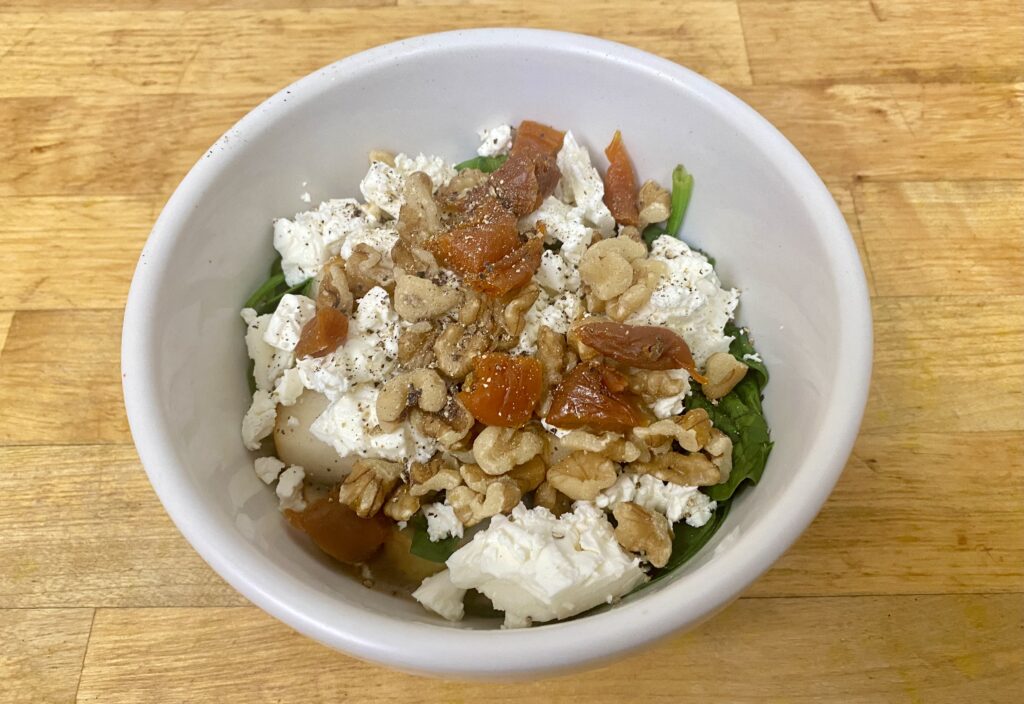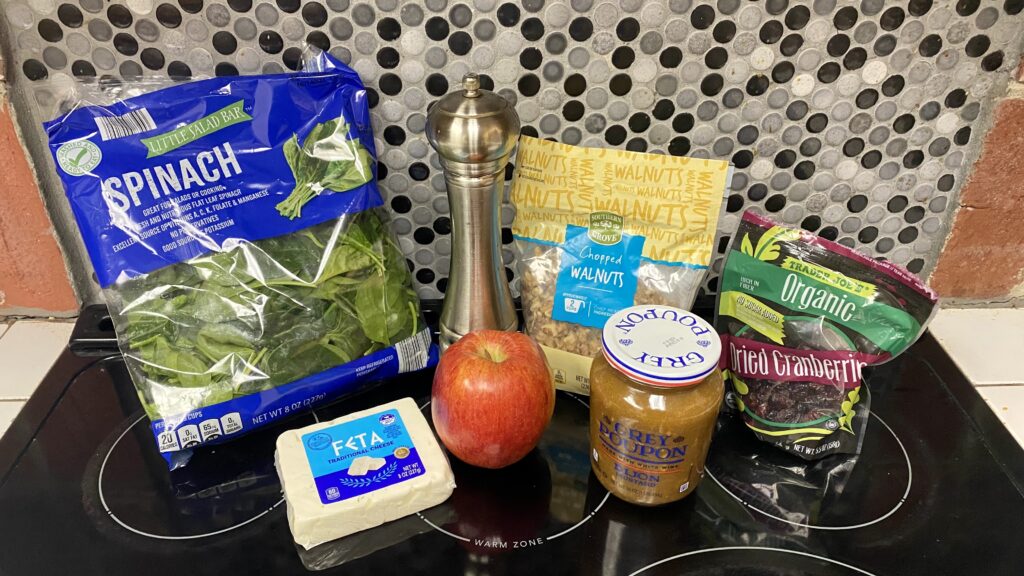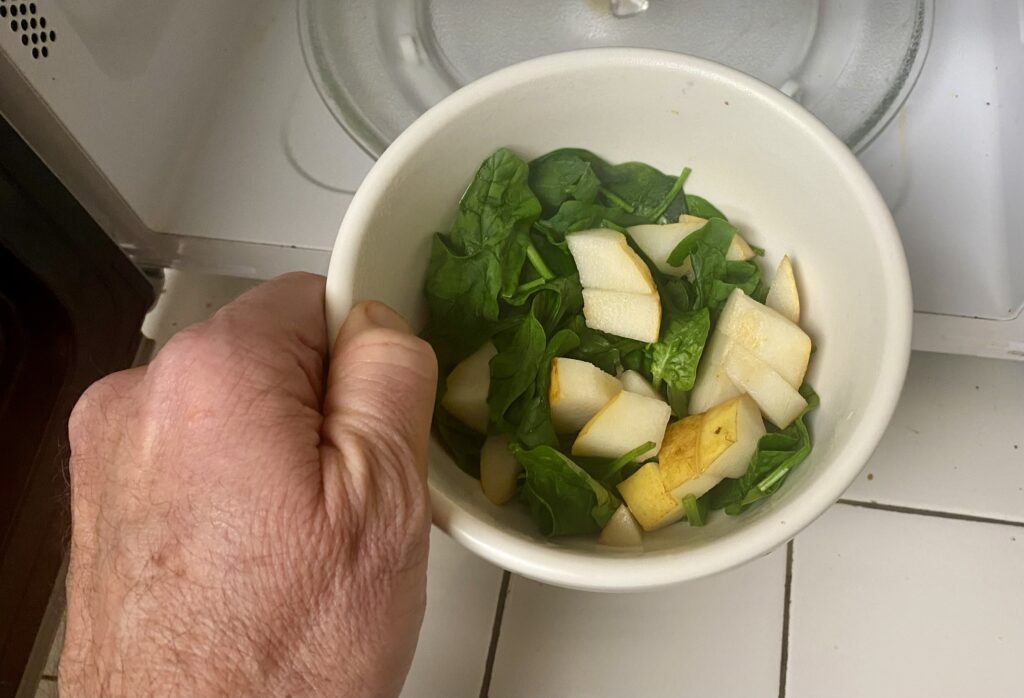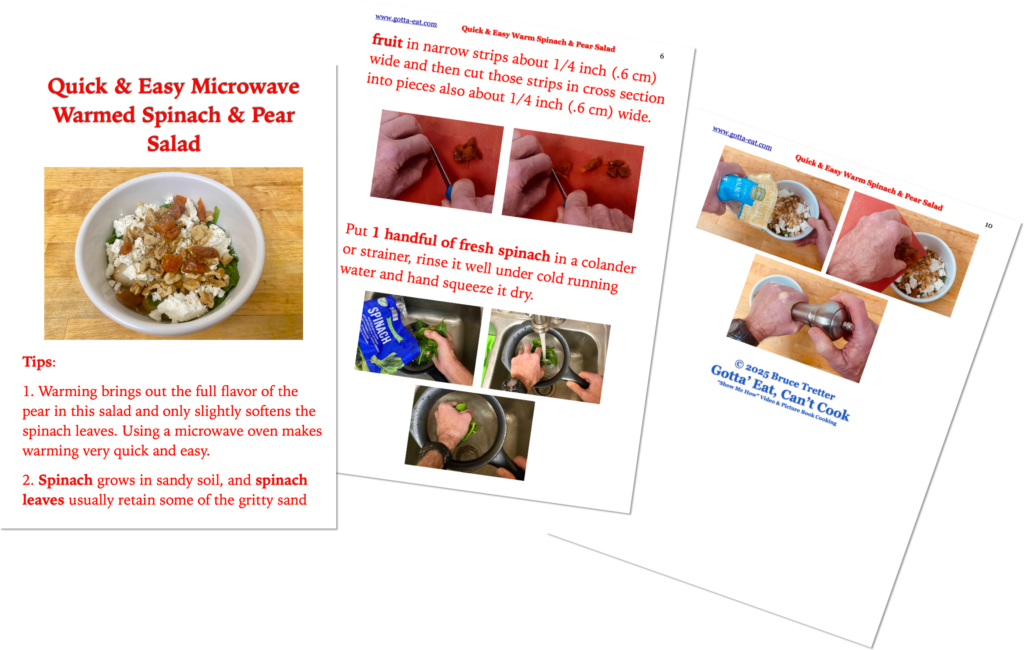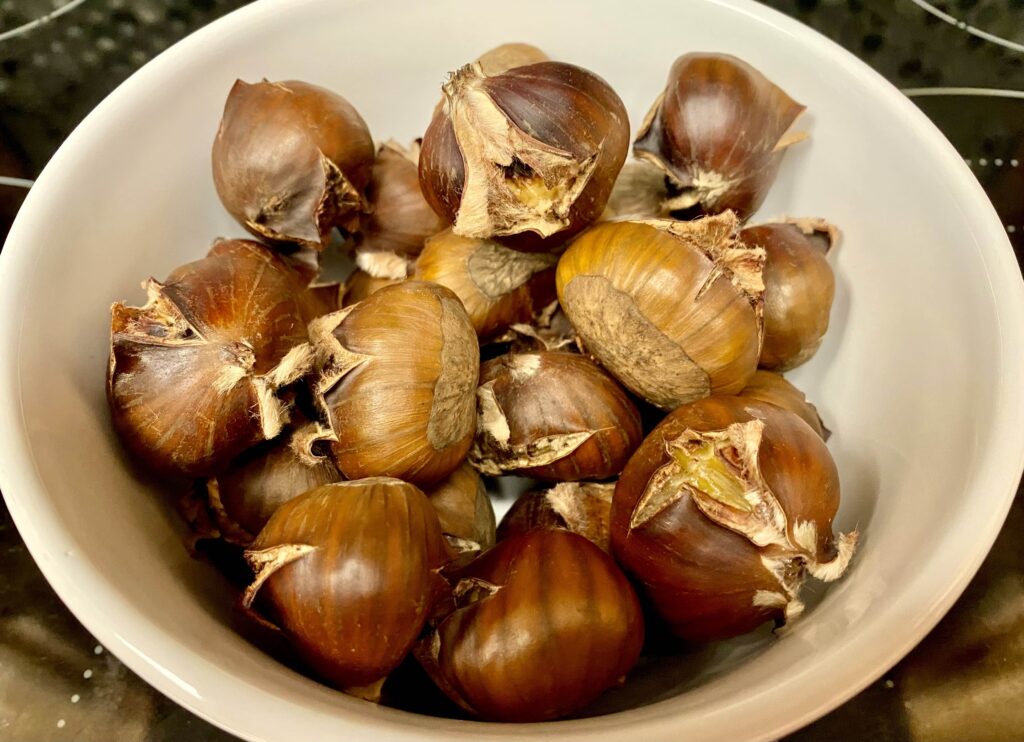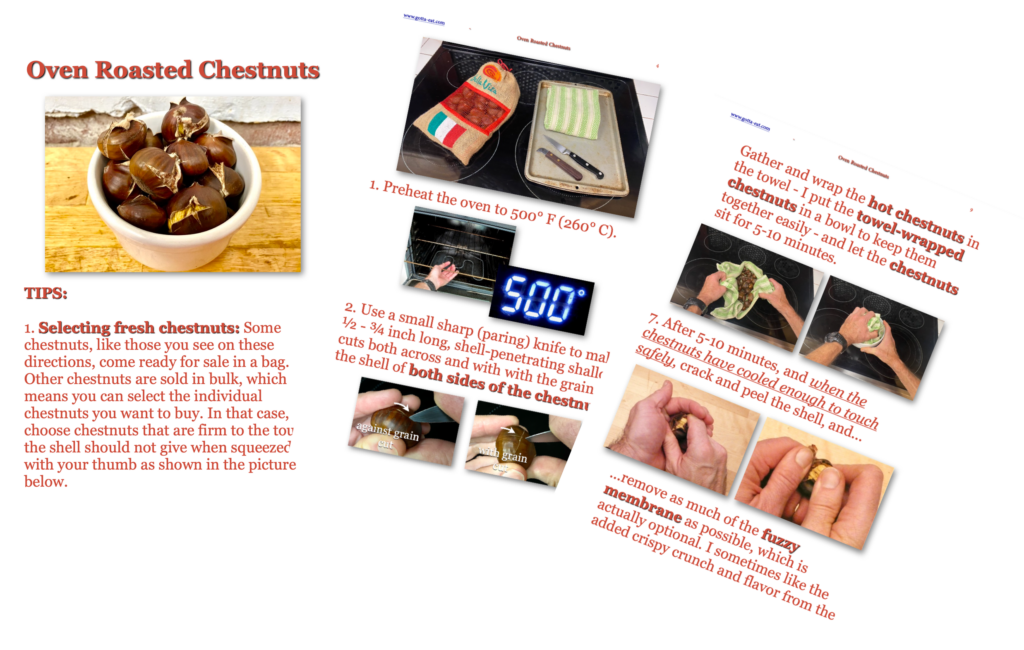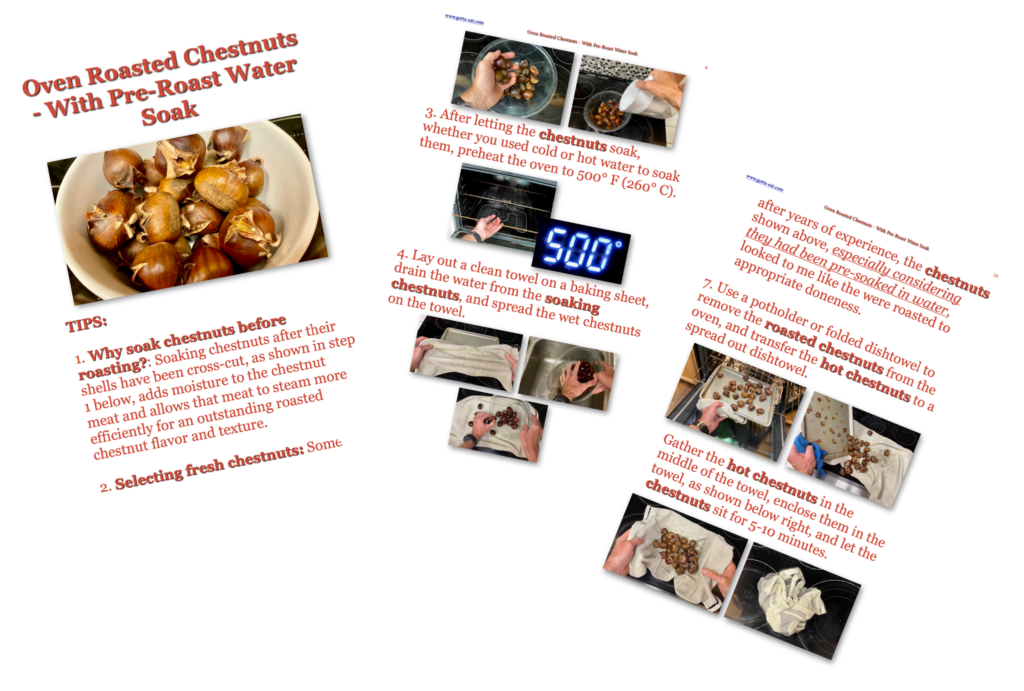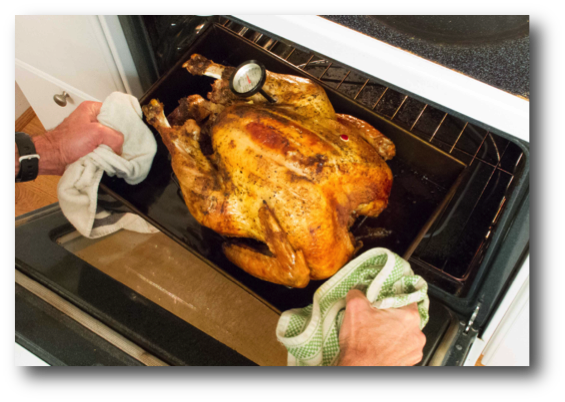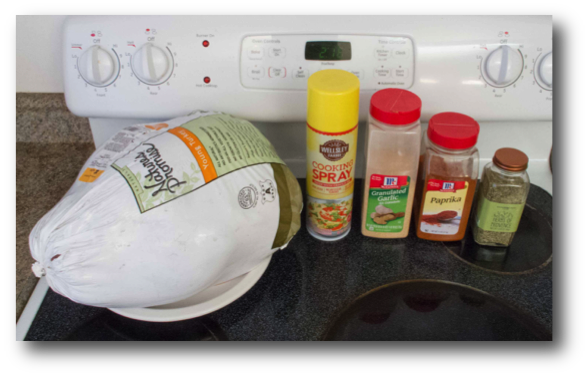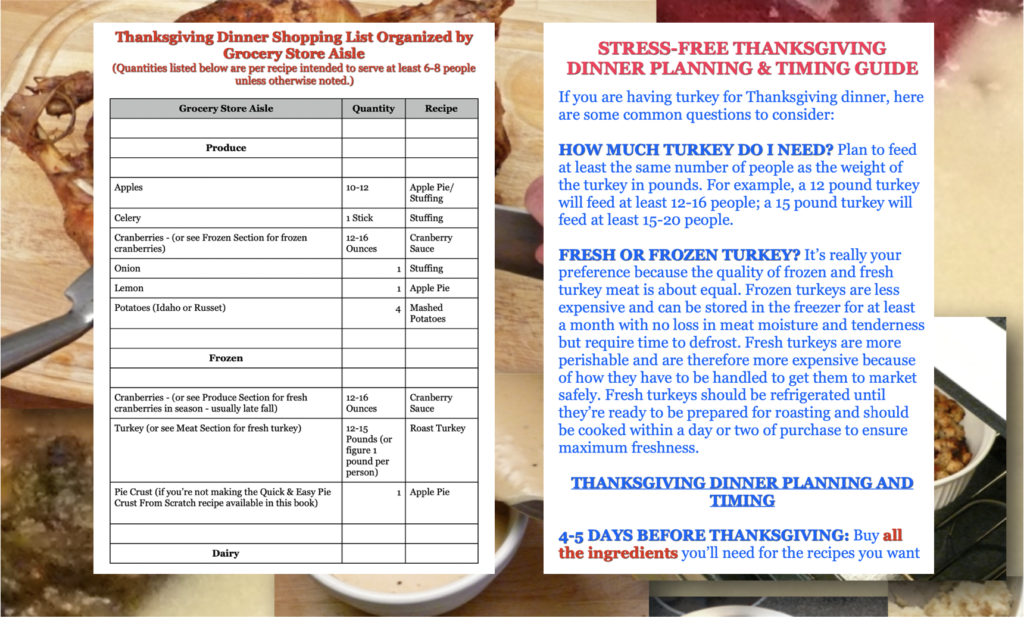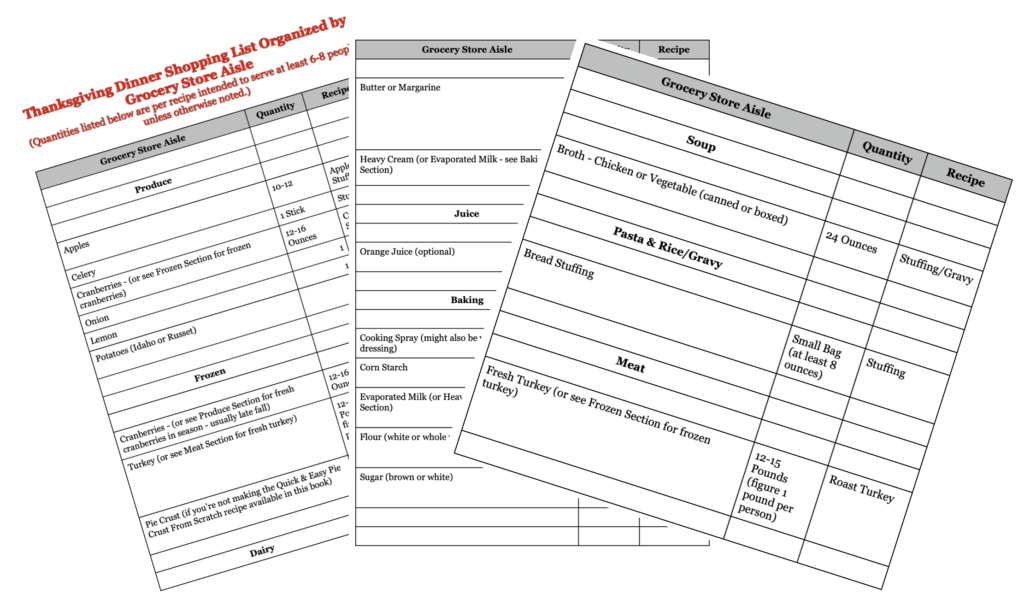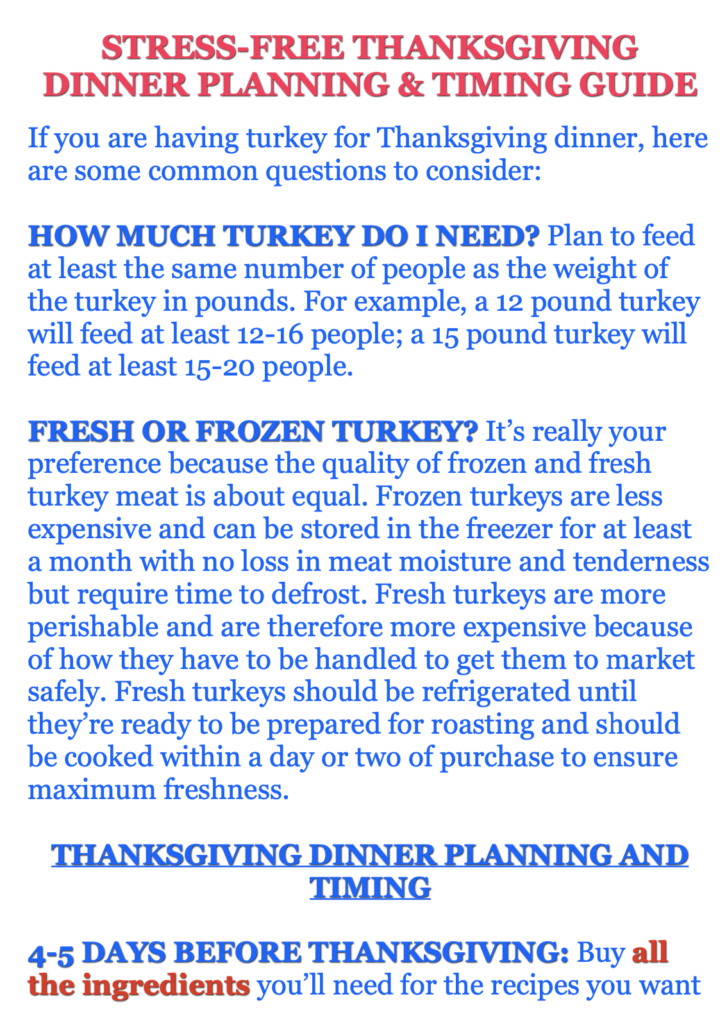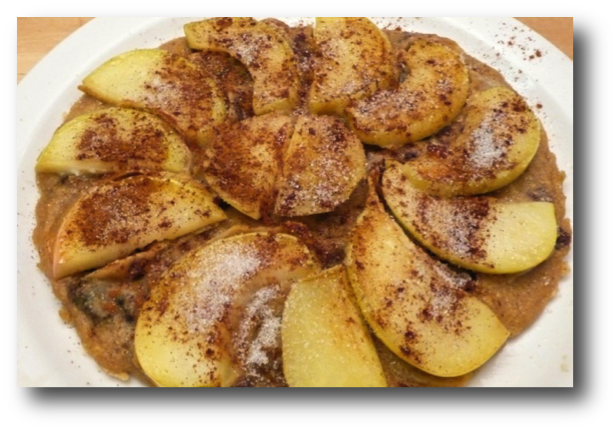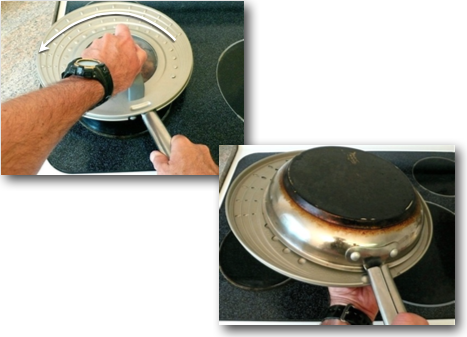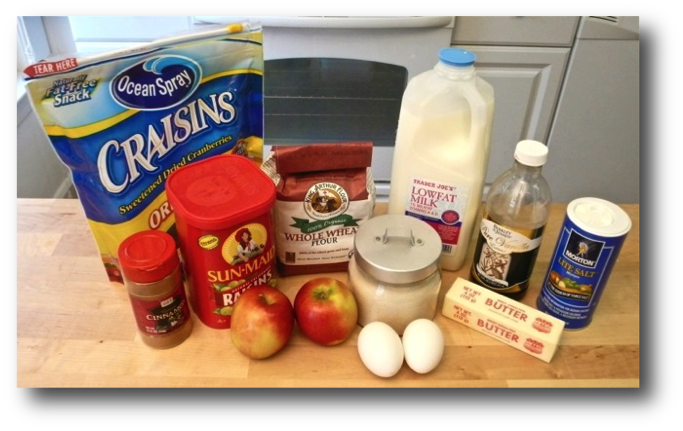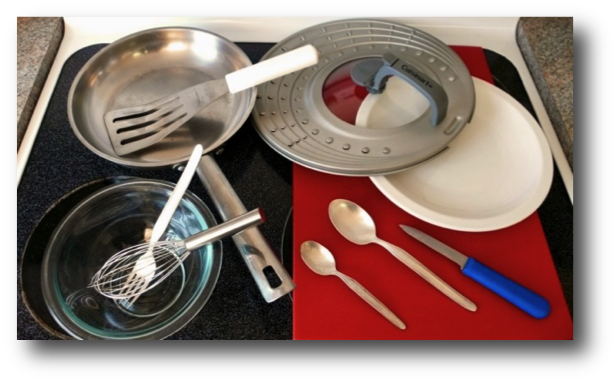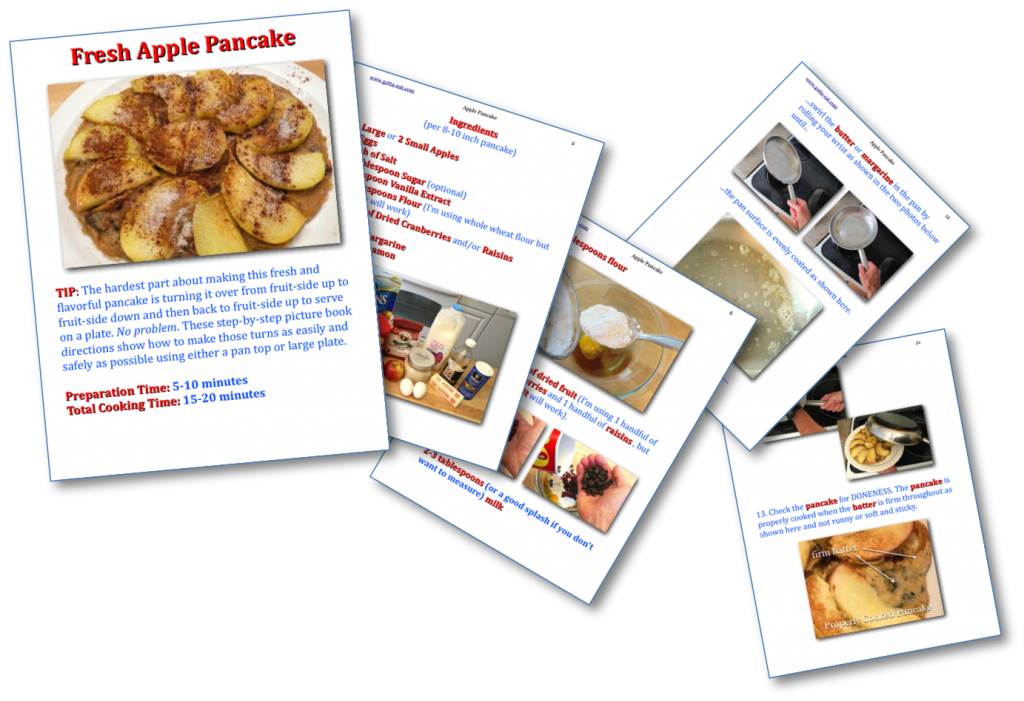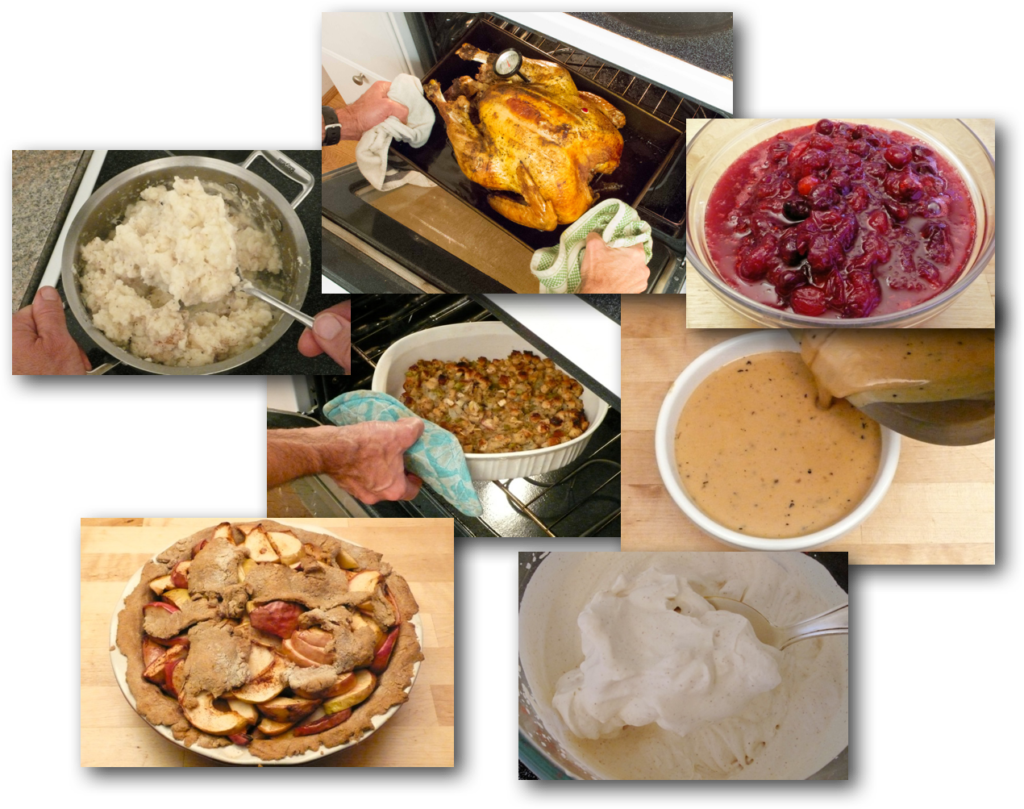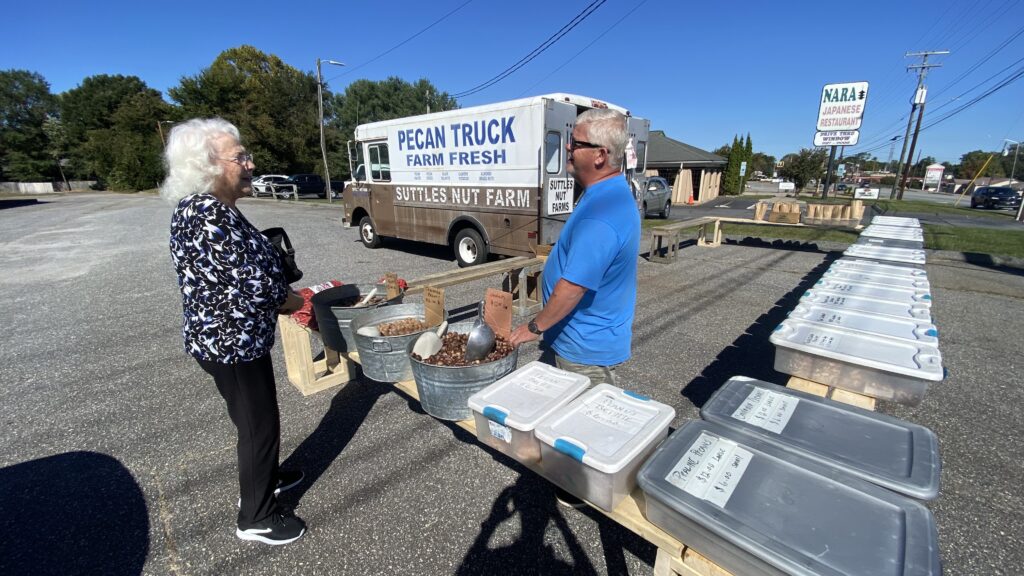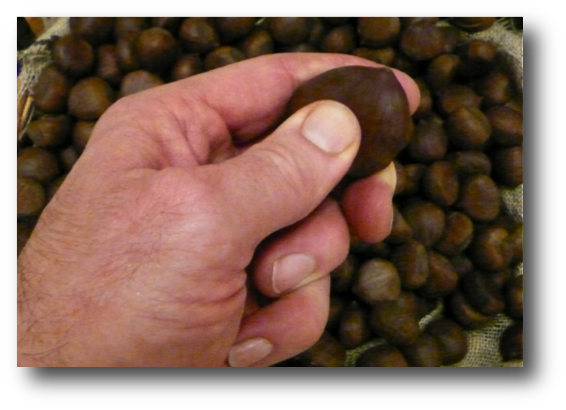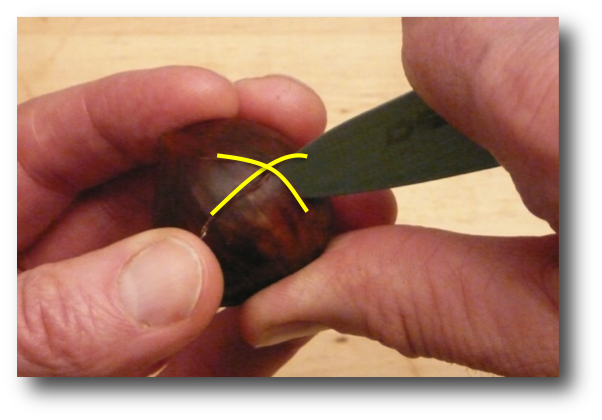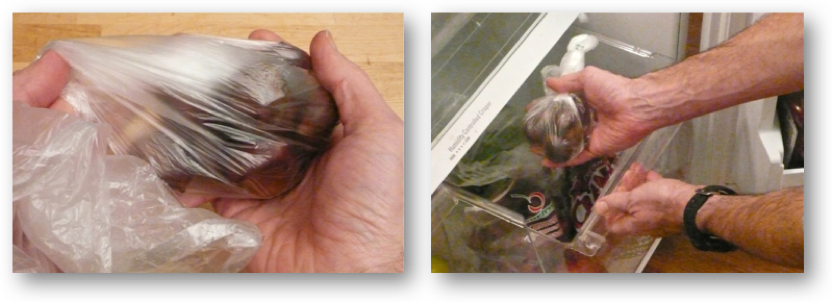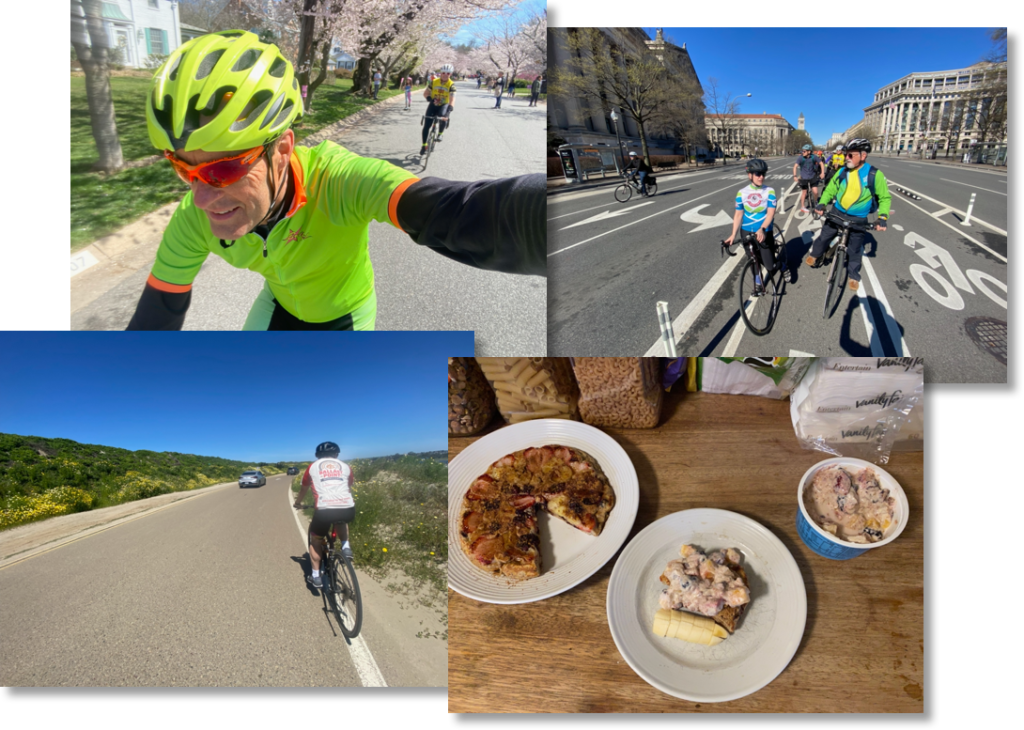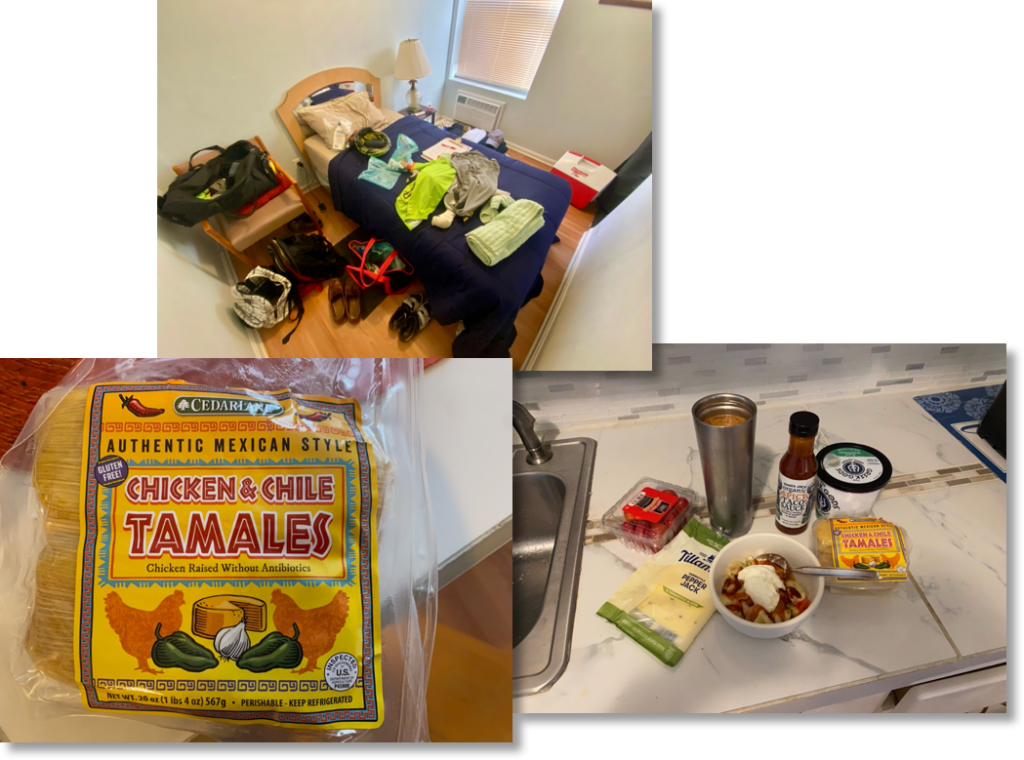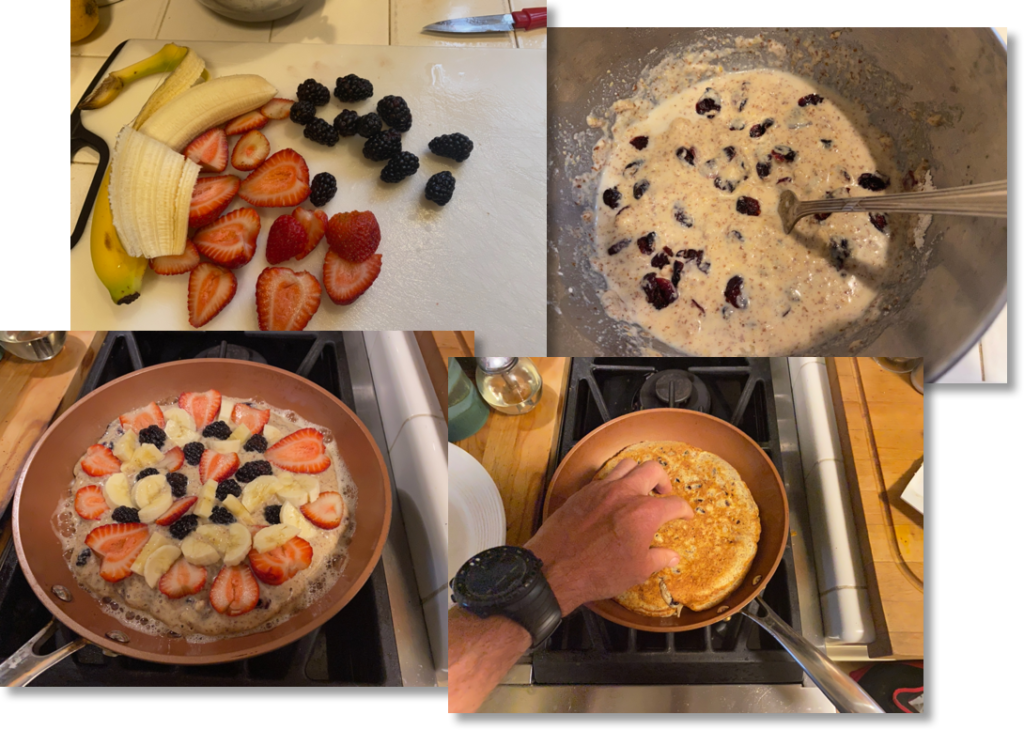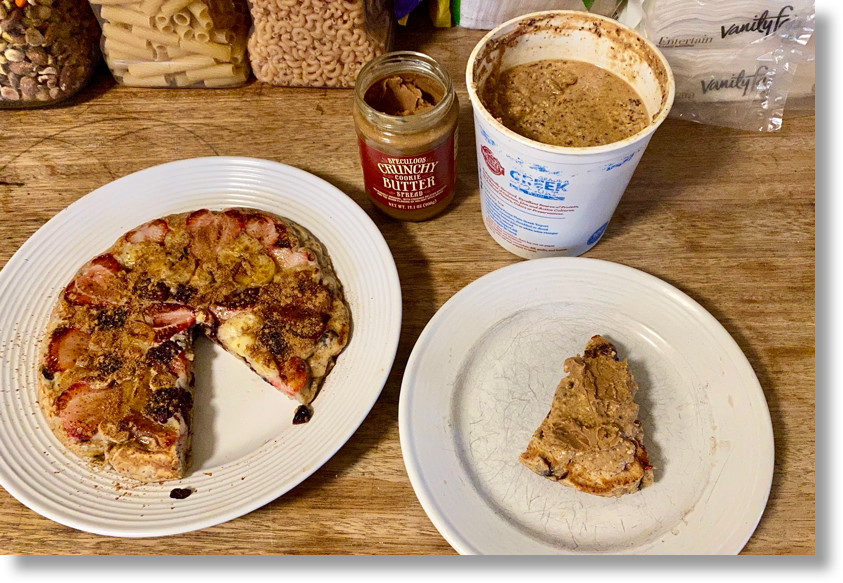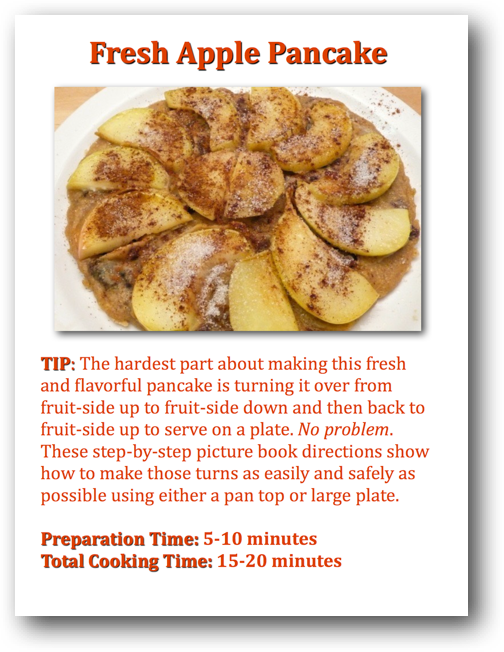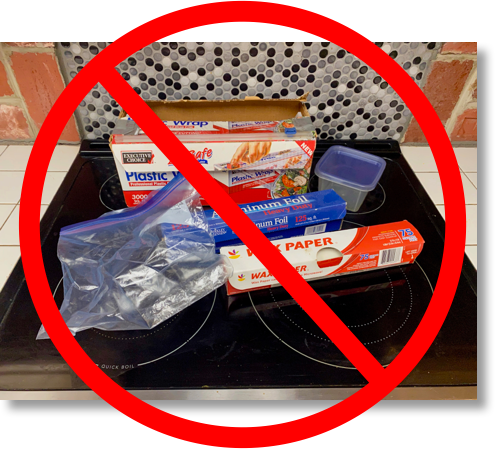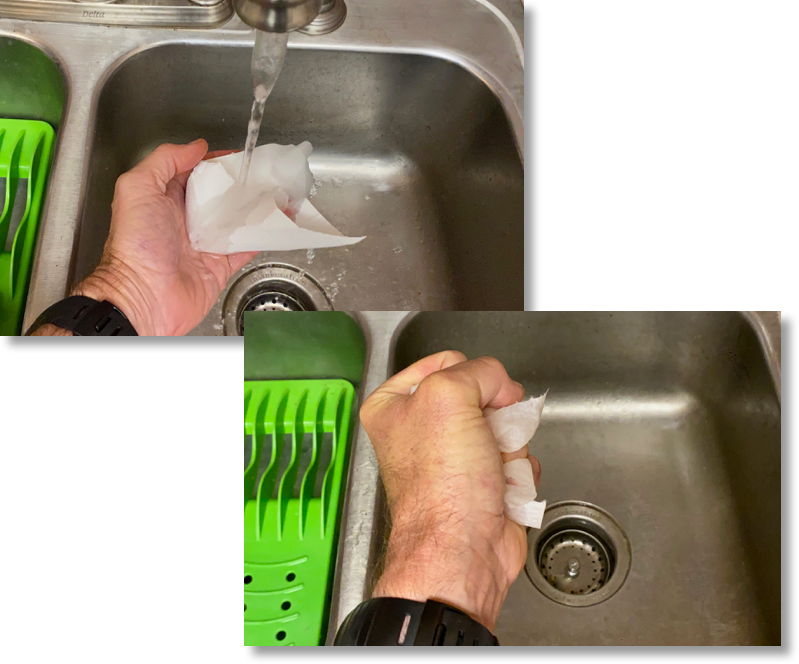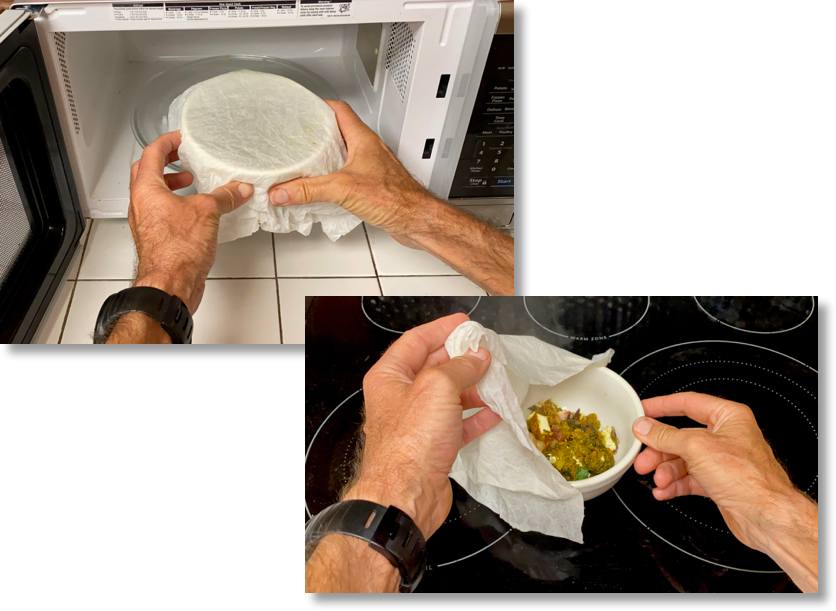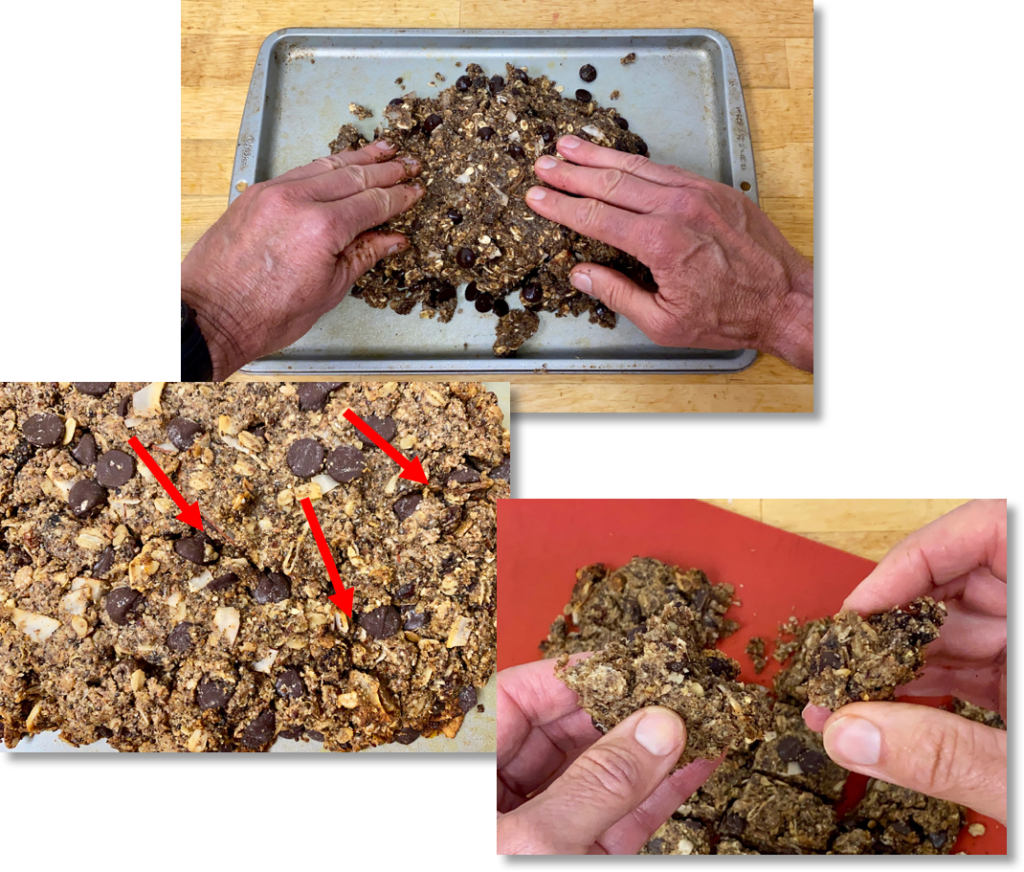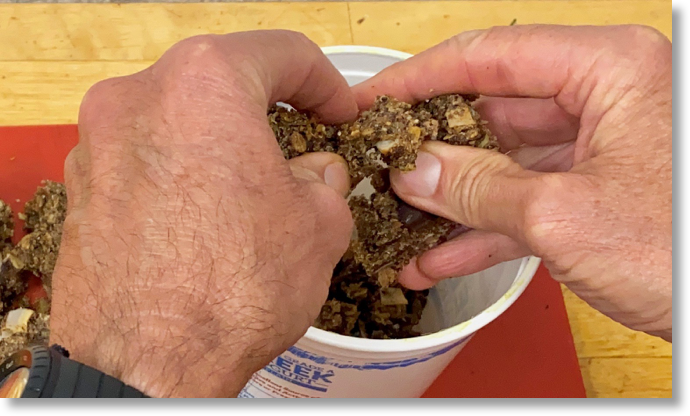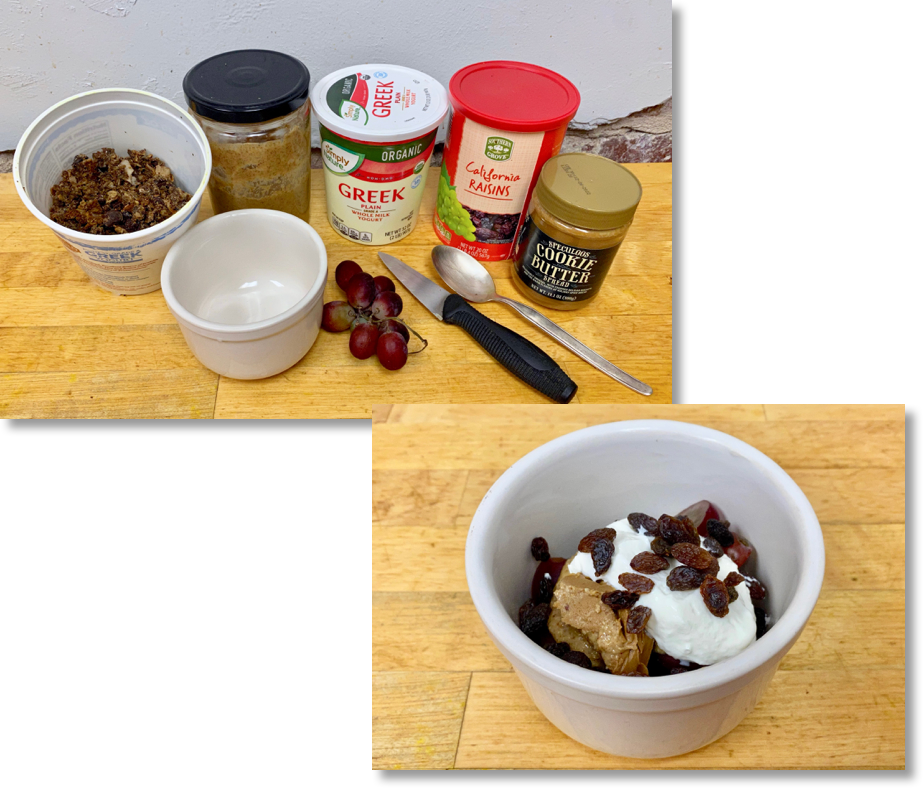Last post showed how to make a quick and easy microwave warmed spinach and apple salad. This post shows how to make a quick and easy microwave warmed spinach and pear salad, which is an example of improvising by changing only two ingredients.
Here are the ingredients I used to make the warmed spinach and apple salad.
All I did to improvise on that salad was substitute a fresh pear for the apple and use dried apricots instead of dried cranberries, as shown below.
Nothing changes regarding needed equipment. Here’s all you need: microwave oven, microwave safe bowl, colander or strainer, sharp paring knife and cutting board.
One of the keys to this recipe, just like the warmed spinach and apple salad, is warming the spinach and pear in the microwave oven only until the spinach leaves just start to wilt as shown below, which took only 1 minute in my 1200 Watt microwave oven. As I say in the recipe itself, cooking time will vary depending on your own microwave oven’s Watt power.
Click any picture on this page for a complete, easy to follow picture book recipe.
More very soon!

 February 17th, 2025
February 17th, 2025 

